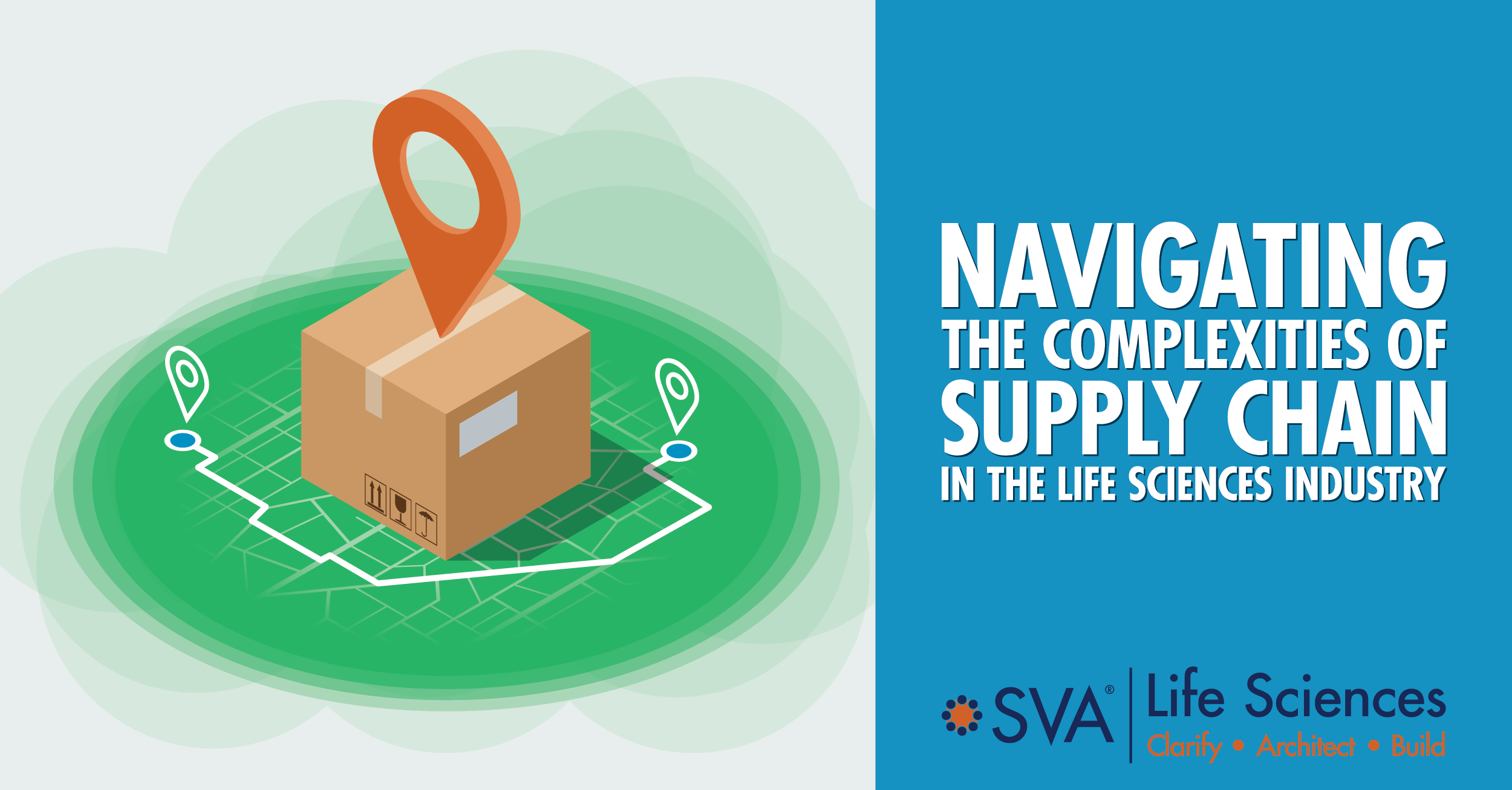One of the most pressing challenges pharmaceutical companies face is balancing the need to invest in critical capabilities like advanced packaging designs, while also conserving cash in their supply chain.
A smooth supply chain is critical for a successful launch, but it can be wrought with numerous issues that need to be considered up-front. Unexpected supply chain problems can wreak havoc on your budget and product. Anticipating your supply chain needs and potential problems ahead of time will help you save money in the long run.
In life sciences, supply chain management is not just about getting a product from Point A to Point B. It is a complex orchestra that involves the intricacies of package design, labeling, and even the physical conditions under which products must be stored and shipped.
Factors like temperature control can become a matter of life and death, especially when products require cryogenic storage or must stay within a specific temperature range.
Commercial Package Formats are Critical in Early Development
An important step that should not be skipped during product development is consideration of the commercial pack format(s) when planning stability studies. Getting the right packaging formats at launch can make a significant difference in early launch success. Sometimes the cheapest primary pack-out is not the best option. The costs of more expensive packaging will easily be offset by faster adoption of the product once launched.
Also, if market research studies determine that, for example, a hospital unit-dose format is required, stability studies may have to be added late in the development cycle, impacting the timing of a commercial launch.
“Commercial launch considerations may seem years away during early product development phases and are often ignored until too late in the process. Controlling costs is often a primary driver,” says Al Swarts, Commercialization Strategist for SVA Life Sciences.
“Consider that your new product’s early adoption post-approval may be enhanced by addressing items such as commercial packaging formats much earlier than you might think. Investing the right dollars on the right issue at the right time could benefit targeted patients much more than simply saving money on a limited stability program, for example.”
Commercial Package Formats Impact the Entire Commercial Supply Chain
Commercial package formats impact the supply chain in several ways:
Costs to Store and Ship
A typical life science product moves from the pack-label manufacturer to a third-party logistics (3PL) company, then to distributors who deliver the product to pharmacies, administration sites, and ultimately, to patients.
Consideration of storage capacities/conditions at each supply chain stage should be made.
- For example, if temperature-controlled packaging is needed, will dispensing pharmacies have sufficient storage to satisfy patient needs?
Timing and costs to ship from node to node also need to be considered.
- For example, if cryogenic containers are required to ship commercial packaged products, it could influence where contract manufacturers should be located to control costs and product integrity. It may be better to have a contract packager in both the US and EU, rather than try to supply commercial packages from one single global site.
Product Integrity
Designing primary and secondary package formats that minimize re-packaging and unnecessary handling are critical for some products.
- For example, if the 3PL has to re-pack product to ship its orders to distributors, is there a better pack format to send to the 3PL that would minimize re-packing and handling steps?
- o Likewise, if the dispensing pharmacy has to re-package most Rx fulfillments, is there a more efficient/effective way to configure pack-outs?
Patient-Friendly Packaging
For products that will be opened by the patient, consideration should be made to make the packaging as simple and goof-proof as possible.
- For example, if the product is formulated as a solution, drops or suspension, is it easy for the patient to access/use all products in the container? Can they tell when to get a refill before they run out?
- Is there a need to include simple indicators to warn patients when they are out of temperature ranges or nearing expiration dating?
- Will the target patient pool have the physical capabilities to open and close containers – or will caregiver assistance be needed to administer?
- Are there simple aids that can be incorporated into the package design that can help ensure patients take their doses on time?
Consider Commercial Supply Chain Decisions Early in the Product Development Cycle
Involving supply chain management early in the product development cycle is essential for success. Failing to do so can cost your company time and money. Packaging design is not just about aesthetics; it has real-world implications on product effectiveness, costs, and patient experiences.
By paying attention to these details early on, life sciences companies can optimize their investments and cash flow without compromising on the efficacy or safety of their products. The goal is to design it right the first time vs. having to suffer through sub-optimal results with the likelihood of having to do it all over again.
Are you navigating similar supply chain challenges? It may be time to reassess your approach. Contact SVA to learn how we can help you with supply chain management and help manage your packaging design processes.

© 2023 SVA Life Sciences

